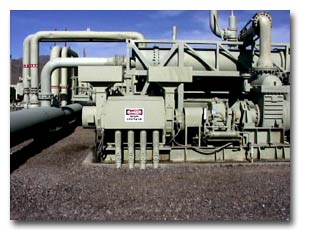Binary
 Choice of a particular power plant design is based on a number of factors, with resource temperature being one of the most important considerations. In general, low to moderate temperature resources lend themselves to a binary application.
Choice of a particular power plant design is based on a number of factors, with resource temperature being one of the most important considerations. In general, low to moderate temperature resources lend themselves to a binary application.
Resource temperatures appropriate for binary plants range from just below 100ºC up to about 165ºC. In a binary type system, the hot geothermal water is pumped from the wellfield using either line-shaft or submersible pumps that keep the pressure high enough to maintain a liquid phase. The hot water is piped through shell-and-tube heat exchangers where heat is transferred to a low boiling point “working” fluid. The working fluid, typically pentane or isobutane, is boiled to form a high-pressure vapor. This vapor is then directed to a turboexpander that creates mechanical energy which is subsequently converted into electrical energy in the generator. Low-pressure working fluid vapor leaving the expander is then condensed by rejecting heat to the atmosphere. This is accomplished by using water from a cooling tower in a shell-and-tube condenser or, if a source of fresh water is not available for make-up, by an air-cooled condenser. The cooled geothermal water is then piped to injection wells to provide pressure support for the geothermal reservoir.
